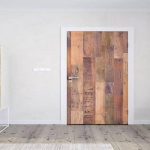Sump pumps must be installed during the construction of buildings to ensure proper drainage and prevent water damage, but several mistakes can happen during installation which may result in inefficiencies or even failures later on. If you would like to successfully install sump pumps and make them perform optimally, it is important to know these mistakes and take action early enough.
1. Sump Pits That Are Not Big Enough
One of the most common mistakes when installing sump pumps is inadequate sizing of the sump pit. This will lead to overflows and ultimately pump failures in case it is too small for the amount of water that falls during heavy rains or floods. It’s very crucial to get an accurate calculation on how big a sump pit should be considering factors such as the size of the basement or crawl space and the anticipated amount of water.
2. Wrong Pump Placement
Misplacement of a sump pump within its container may cause its poor performance. The bottom position would be ideal for positioning the pump to boost effective drainage. Otherwise, failure to place it at reasonable heights often leads to flooding repeatedly because some part of the water usually remains before being pumped out fully.
3. Failure To Vent Properly
Proper ventilation around the sump pump and pit is essential for preventing moisture build-up, molds, and mildew development. Inadequate ventilation during building can cause overheating on the motor of the pumps hence their lifespan reduces drastically. So, if required, install fans and vents that can circulate air properly around these pits and pumps.
4. Selection Of Pump With Undesirable Size Or Type
Choosing the correct size and type of sump pump during building construction is very important for effective operation thereof as using one that is too small may lead to little water removal while utilizing that which is too large will cause unnecessary power consumption. Similarly, picking up incorrect types such as submersibles in shallow wells may impact performance.
5. Valve Installation Failure
A check valve is necessary to prevent the backflow of water into the sump pit once it has been pumped out. However, if a check valve is not present or it does not work as expected, water will go back after pumping thus making the pump cycle unnecessarily which can also cause wear.
6. Wrong Discharge Pipe Fixing
The discharge pipe takes away the water from the sump pump and directs it outside the building to a safe location. Among the improper installations are such as cases when the discharge pipe slope is wrong or there was inadequate sealing thereby resulting in seepage and backflowing of water issues. This means that you must ensure that the discharge pipe installation is done correctly and firmly to avoid this situation.
Conclusion:
Sump pumps should be properly installed during the construction of buildings to prevent water damage and keep an area dry and secure; mistakes like improper pit sizing, wrong placement, and lack of maintenance will ensure that your sump pumps work effectively while protecting your property against any potential water-related problems. Begin by taking immediate steps towards these errors as well as investing in strong quality sump pump systems that will protect your structure from destruction by way of flooding.



